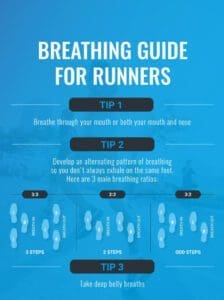How to Breathe Correctly
If you are reading this, there is a chance you are also holding your breath or your breath is shallow. You are not unique, unfortunately. Most of us are not breathing correctly, especially when we are looking at a screen. CFR Staff Therapist and CPI Specialist Mike Butera discusses the following in this article:
- Reflections on The New York Times article, “Checking Email? You’re Probably Not Breathing“
- Provides three additional tips so that you can breathe correctly
- Channels his inner Dory…and encourages you to as well.
Read on to learn more about how to breathe correctly.

Former Microsoft executive, Linda Stone (pictured here), coined the term “email apnea” in a 2008 article for the Huffington Post.
Many of us are not breathing properly. Is screen apnea to blame?
Breathing is a life force that we seldom think about because this process is often automatically triggered by the changes in our nervous system states. Former Microsoft executive, Linda Stone, coined the term “screen apnea” which occurs when our breathing becomes dysregulated by the stress effects of being active on screens while emailing and texting. Similar to Linda, I have discovered that my own ritualistic mindful practices are not enough to keep me calm and relaxed in this world of stimulation. While living in a society where screens and work stress are almost unavoidable, I believe it is critical that we periodically find ways to regulate ourselves back to a state of relaxation through conscious breathing practices.
As I began the task of reviewing and reflecting on The New York Times article “Checking Email? You’re Probably Not Breathing”, I quickly noticed my own nervous system becoming mobilized with an immediate deep inhale and release of a sigh. Right on point, I was holding my breath while turning to initiate a plan of action for writing this piece. This reaction was a combination of being brought back to moments of work stress in a past life and a healthy stress response from having focused attention.
Prior to my new career as a therapist, I was working in an office job with multiple streams of electronic communication including a constant flux of email and instant messaging traffic. The question “Did you see my message?” was frequently asked on an hourly basis. I remember the added stress that this put on my body on top of the planned work tasks. As a result, I developed habits of self-care while being in a persistently stimulating situation that I didn’t have control over.

We do not recommend checking your email while running. But we do recommend following this “how to breathe when running” tip sheet put together by HCMC Marathon.
Tips for how to breathe correctly
The NY Times article lists the following three tips for better breathing habits:
- Setting periodic alerts to check in and consciously reset your breathing patterns
- Broadening your field of view by using larger screens
- Taking intentional screen breaks with relaxing body movement
I’ve employed all of these tactics to give my mind and body a break from the inevitable nervous system mobilization of working. In addition, I use the following specific types of breathing techniques to help reduce the negative effects of chronic stress. These exercises may need to be executed several times before you feel the effects of nervous system downregulation.
Breathing Technique #1: Physiological Sigh
The physiological sigh is the quickest and easiest breathing technique to get your body back to a relaxed state. It can be accomplished by simply taking two sharp inhales through the nose and giving an extended exhale through the mouth. This process mimics our body’s natural sighing function.
Breathing Technique #2: Belly Breathing
Belly breathing involves slowly inhaling while feeling your stomach pressing into your hand while attempting to keep your upper chest as still as possible. As you exhale through pursed lips, tighten your abdominal muscles bringing your stomach toward your spine.
Breathing Technique #3: Box Breathing
Box breathing is a timed technique of cyclic breathing with visualizing a box, or square. For example, you can focus on creating a square by inhaling through your nose as you slowly count to four, holding your breath for a count of four, exhaling for a count of four, and finally, holding your breath again for a count of four. To further this practice, you can play with the timing of breaths and visualize creating a box out of six-breath cycles.

As certified life coach Dory (pictured here) reminds us, just keep swimming. And if you’re not a fish, just keep breathing.
Just keep breathing (correctly).
Our focus needs to be on discerning the moments experiencing healthy stress transitions into chronic stress while putting our ability to control our breath into practice. It’s important to accept that our bodies naturally fluctuate between states of stress and relaxation throughout the day. We have a universal stress mechanism as part of our biology that allows us to move our bodies through life experiences. Without the ability of the nervous system to shift us into drive, we would stay parked on the couch.

Staff Therapist Mike Butera (pictured here) helps his clients learn how to breathe correctly.
About the Author
Mike Butera, MFT, is a Philadelphia therapist and CFR’s Community Partnerships Initiative Specialist. If you have questions about how to breathe correctly, this article, or Mike’s practice, you may reach him at mbutera@councilforrelationships.org or 215-770-2334 ext. 4346.
CFR offers therapy and psychiatry services on a slide-fee scale. See our Therapist & Psychologist Directory to find a CFR therapist or psychiatrist near you.
More from CFR
De-Stress with This Easy Breathing Technique You Can Do Right Now
